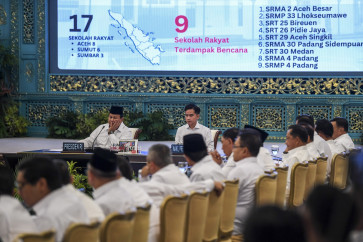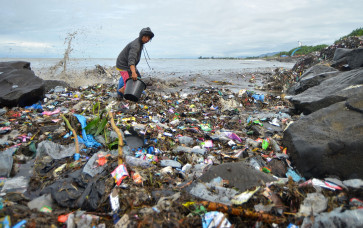Popular Reads
Top Results
Can't find what you're looking for?
View all search resultsPopular Reads
Top Results
Can't find what you're looking for?
View all search resultsNew environment minister to evaluate waste import policy
Indonesia has been seeing an increase in the import of paper and plastic scrap to be processed domestically into raw materials for industrial production.
Change text size
Gift Premium Articles
to Anyone
N
ewly inaugurated minister Hanif Faisol Nurofiq has said his ministry will consider stopping the import of paper and plastic scrap for industrial raw materials.
“We will evaluate the scrap imports. I think we should stop doing that, therefore, there must be a strategic plan in order to be prepared,” Hanif said in Jakarta on Tuesday, as quoted by Antara.
Indonesia allows the import of paper and plastic scrap to be processed domestically into raw materials for industrial production. Imports have increased in the past year, with imports of paper scrap rising by 6 percent to 3.24 million tonnes last year. Plastic scrap rose by 30 percent to 252,472 tonnes, according to data from Statistics Indonesia (BPS).
However, the Indonesian waste-processing industry does not have the capacity to process all of the imported waste. Only a few recycled plastic materials are in relatively high demand, such as polyethylene terephthalate (PET) used for water bottles, but not other types of plastic.
The imported scrap is also contaminated by residues or other kinds of waste that cannot be processed. Advocacy group Ecological Observation and Wetland Conservations (Ecoton) estimates that up to 82 percent of paper waste imported from Australia is not recyclable, as it contains flexible plastic scrap, plastic layers or plastic packaging.
These residues often end up piling up at illegal dump sites in East Java and other regions, or are used as cooking fuel for the production of tofu, among other food materials.
Read also: Growing paper, plastic scrap imports aggravate waste problem
Your Opinion Matters
Share your experiences, suggestions, and any issues you've encountered on The Jakarta Post. We're here to listen.
Thank you
Thank you for sharing your thoughts. We appreciate your feedback.



















